- Bernard Preston homepage
- Legumes
- Inoculating Rhizobia Onto Legume Seeds
Inoculating rhizobia onto legume seeds
Inoculating rhizobia onto legume seeds enables the plants to capture atmospheric nitrogen.
Roughly four-fifths of the air is relatively inert nitrogen gas. Plants must have the element to thrive. Naturally it comes from two sources; lightning and bacterial rhizobia that thrive in nodules on the roots of legumes.
To that organic farmers would add the dung of animals; in particular cattle, horses and chickens. But of course that from a goat or an elephant would be equally good.
Commercial farmers are unable to get sufficient of these natural nitrogenous sources; so they would use inorganic fertilisers made primarily from oil or the Haber-Bosch process at high temperature (350oC) and great pressure (400 atm). It's very costly to synthesise.
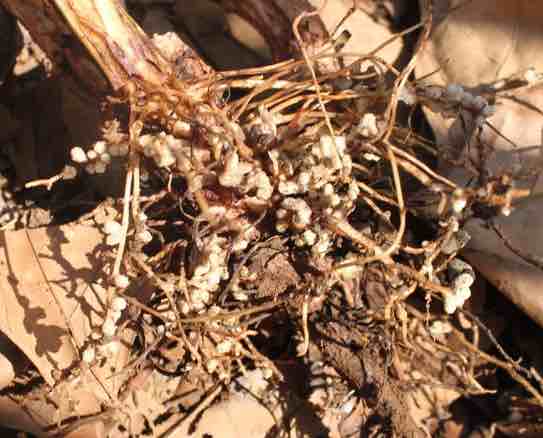
Proteins
This is a typical amino acid.
 Notice the N atom in the amino group.
Notice the N atom in the amino group.Proteins are made up of long chains of amino-acids; each of these molecules must have a nitrogen atom.
Since legumes are the only plant source of protein they absolutely must have an ample supply of nitrogen to synthesise amino acids; it is provided in large measure by these rhizobia bacteria on their roots.
Rhizobia and Legumes have a mutually-beneficial relationship; it is known as symbiosis. The plants get soluble forms of nitrogen from the bugs; ammonia for the amino acids they will synthesize. In exchange the bacteria receive energy from photosynthesis in the leaves.
Legumes require specific strains of rhizobia; luckily both peas and broad beans require the same bacteria. I will try them on the limas as well; should the roots become covered with pinkish nodules then we will be trebly satisfied.
You must have the correct strain for each plant for successfully inoculating rhizobia on legume seeds; they can be purchased from gardening shops. Make sure you get the right specie.
The correct strain will be more effective than the native species that inhabit the soil from previous plantings of legumes. If you cut open one of the nodules it should appear pink inside.
Alkaline soils
Inoculating rhizobia onto legume seeds is much less effective in acid soils. So add plenty of wood ash from your fires in the winter; and organic vegetable compost to the patch of garden where you are wanting to grow your beans and peas.
If you want to add inorganic fertilisers to the ground where you are planning to set your legumes make sure they are rich in phosphates and potassium but low in nitrogen; otherwise inoculating rhizobia onto legume seeds will not be effective.
The plants will not fix nitrogen from the air if the soil is already rich in the element from inorganic fertilizer.
Make a slurry
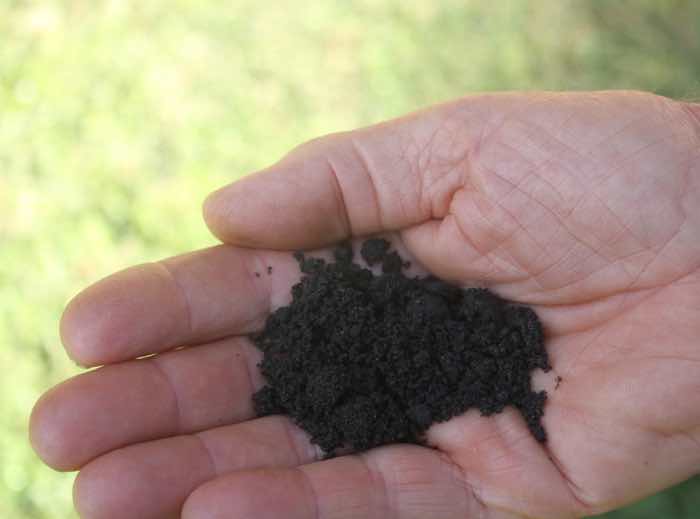
The inoculant of living rhizobia usually comes mixed with peat; mix it with water into a slurry to which you add the seed and leave overnight.
There are more efficient ways using an adhesive compound but that we will leave to the commercial farmers.
An alternative way is to mix the inoculant that you have purchased with some rainwater in a can and then dribble it into the ground; either when planting or after the seedlings have emerged. Do it on a cool and cloudy day; the UV in sunlight will kill the bacteria.
Enjoy inoculating rhizobia onto legume seeds; the plants will flourish with the extra nitrogen and the protein in the peas and beans will increase. You will have a far better yield.
Peas, broad beans and vetch
Peas and broad beans in particular will benefit from inoculating rhizobia onto legume seeds; they use the same strain. You may need to pick off the growing ends of the plants so they do not become too tall, fall over and break with the weight of the fruit; when they get to about a metre high.
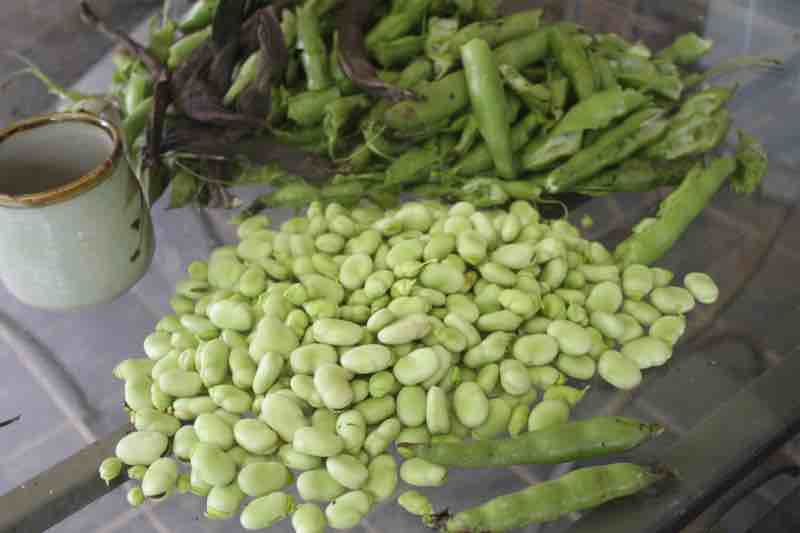
Just look at all these broad beans from just two plants, harvested at the end of the season after enjoying fresh young fruit for months. You too can grow a mountain of good food in your garden; knowledge about inoculating rhizobia onto legume seeds will double the yield.
Broad beans incidentally are the only common source of dopamine, the feel-good hormone. Research shows they are even more effective than medication in the treatment of Parkinson's disease[2].
On a personal note I have an irritating tremor in my right hand that is well managed if I enjoy broad beans at least once a day; and preferably twice. So we grow a large patch and freeze the young seeds in small packets. Daily they go into soups, stews and Eggs Parkinson's disease for breakfast.
Lima beans are another favourite; they apparently use the same strain of rhizobia as peanuts and cowpeas.
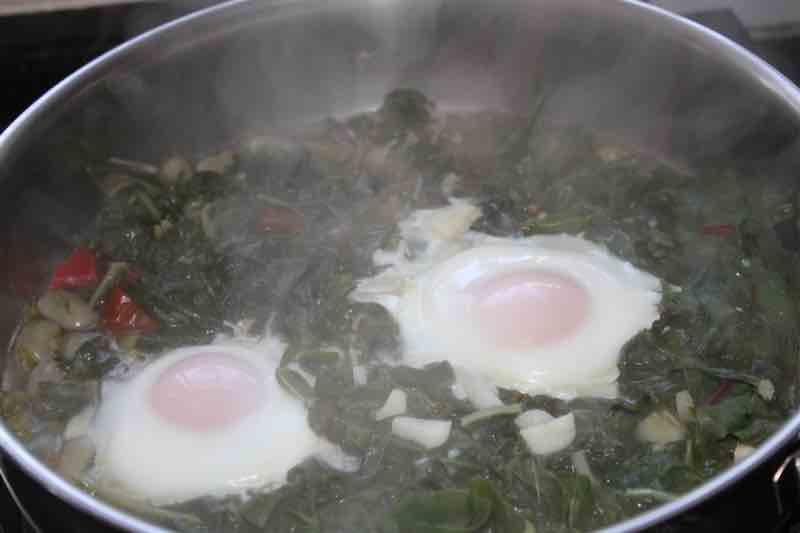 The young broad beans look like fat grey ticks.
The young broad beans look like fat grey ticks.It's really just a variant of Eggs Florentine with added broad beans; they look like small grey ticks in the photo above.
Fava bean nutrition
If you are interested in some of the physiology and research behind using broad beans for the treatment of Parkinson's disease then follow this link[3].
It is the fastest growing degenerative brain disease in the world. Since it affects both one's movement and thinking, treatment using broad beans has to be done via a mentor. Help is need with growing the plants and getting the amount right; the medicine must be reduced. Typically a spouse or child will support the patient; this is vitally important as it is possible to overdose.
Broad beans are called favas in some parts of the world.
Blue Zones
In five parts of the world known as the Blue Zones, folk have a very strong sense of "ikigai;" purpose for living. In all of them they grow and eat broad beans for the dopamine that gives them such verve and that feel-good sense.
You are unlikely to be able to purchase them from the supermarket. Young and fresh they are perfectly delicious; loaded with feel-good. Old and starchy they are absolutely horrid; you have to grow them yourself. Then inoculating rhizobia onto legume seeds will take on more significance.
Here are some broad bean tips. They are not difficult to grow but they do require some regular attention and plenty of water.
Life is full and exciting when you are getting plenty of dopamine in your brain; that's why these people have such fruitful and busy lives. Blue zone longevity is the buzz-word; one in a thousand become centurions.
Yet more musings from the summer vegetable garden if you are still bored!
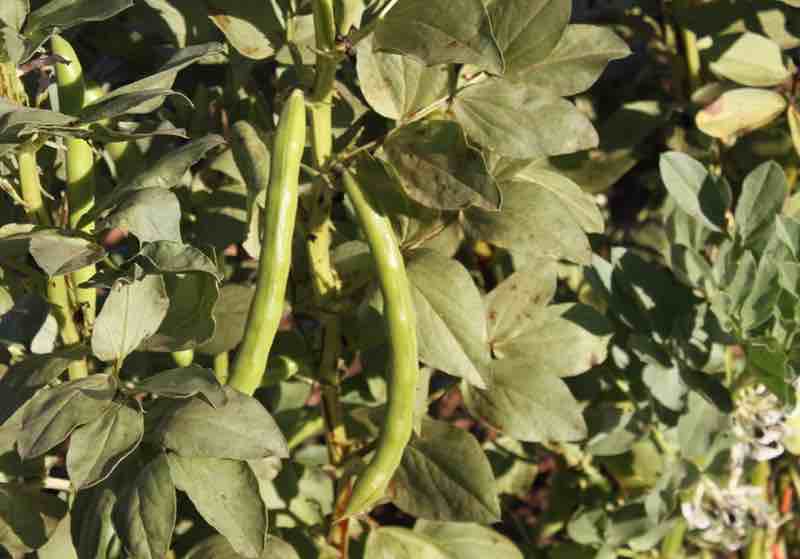
Dicky your legumes up
Most legumes do not have a great deal of flavour. Nor are they a complete protein; there are some missing amino acids. Green peas are perhaps the exception.
So those who enjoy them regularly tend to dicky them up herbs and spices; and combine their legumes with nuts and seeds to get those missing amino acids.
Whilst the probiotic drink called kefir is the very best source of calcium, legumes in general have decent amounts; especially soybeans and tofu.
Inoculating rhizobia onto legume seeds
Inoculating rhizobia onto legume seeds reduces the need for nitrogenous fertilisers; it lies at the very heart of organic gardening.
This rhizobia inoculant is manufactured by Stimuplant in South Africa.
- Telephone: 012-802-0940
- www.stimuplant.co.za
It is also available from Agricol nationally as an inoculant called Peas and Vetch; for the princely sum of R109 for 250 grams.
- Howick: 033 330 2765
When browsing use right click and "Open Link in New Tab" or you may get a bad gateway signal.
Newsletter
Our newsletter is entitled "create a cyan zone" at your home, preserving both yourself and Mother Earth for future generations; and the family too, of course. We promise not to spam you with daily emails promoting various products. You may get an occasional nudge to buy one of my books.
Here are the back issues.
- Lifestyle and ideal body weight
- What are ultra-processed foods?
- Investing in long-term health
- Diseases from plastic exposure
- Intensive lifestyle management for obesity has limited value
- A world largely devoid of Parkinson's Disease
- The impact of friendly bacteria in the tum on the prevention of cancer
- There's a hole in the bucket
- Everyone is talking about weight loss drugs
- Pull the sweet tooth
- If you suffer from heartburn plant a susu
- Refined maize meal and stunting
- Should agriculture and industry get priority for water and electricity?
- Nature is calling
- Mill your own flour
- Bake your own sourdough bread
- Microplastics from our water
- Alternative types of water storage
- Wear your clothes out
- Comfort foods
- Create a bee-friendly environment
- Go to bed slightly hungry
- Keep bees
- Blue zone folk are religious
- Reduce plastic waste
- Family is important
- What can go in compost?
- Grow broad beans for longevity
- Harvest and store sunshine
- Blue zone exercise
- Harvest and store your rainwater
- Create a cyan zone at your home
Did you find this page interesting? How about forwarding it to a friendly book or food junkie? Better still, a social media tick would help.
- Bernard Preston homepage
- Legumes
- Inoculating Rhizobia Onto Legume Seeds
Address:
56 Groenekloof Rd,
Hilton, KZN
South Africa
Website:
https://www.bernard-preston.com